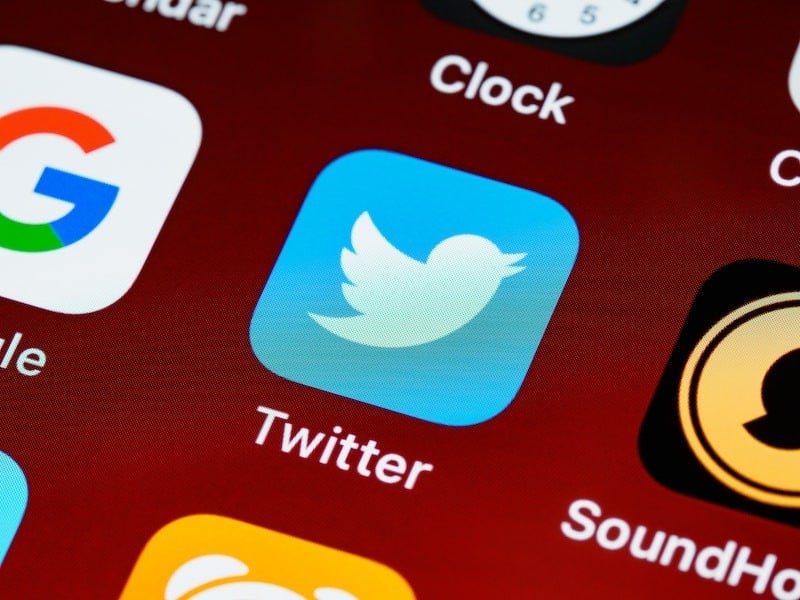Successful Twitter content creation is the foundation of your business’ inbound marketing strategy. Social Media platforms have shown to fuel engagement, traffic to sites, and Twitter might be the most impactful one. According to Statista, Twitter reaches up to 330 million active users monthly and while it may not have as many users as other major platforms, it is one of the most highly engaging sites. So, the content you share to your timeline on Twitter is more effective than you may think.
Twitter Content Marketing Strategy
- 1 Twitter Content Marketing Strategy
- 2 Frequently Asked Questions About Twitter Content Creation
- 2.1 What makes Twitter different from other social media platforms for marketing?
- 2.2 How can I measure the success of my Twitter marketing efforts?
- 2.3 Should my business respond to every mention or comment on Twitter?
- 2.4 How can I increase my Twitter followers organically?
- 2.5 What types of content perform best on Twitter?
- 2.6 How can I use hashtags effectively on Twitter?
- 2.7 Is it worth investing in Twitter advertising?
- 2.8 How can I integrate Twitter into my overall content marketing strategy?
- 3 Twitter Content Specialists
To have productive Twitter content creation you need to start with a viable Twitter content marketing strategy.
First, you need to determine what your marketing goals are on the platform:
-
Create Brand Awareness
-
Drive Site Traffic
-
Expand Brand Reputation
-
Grow Your Client List
In doing so you can have a clearer vision on the funds, time, and type of content that is most impactful for your business. Things such as blog posts shared from your site, product giveaways, or engaging more with your follower base (responding to comments, retweeting and liking that which has to do with satisfied clients) can help increase brand awareness and site traffic.
Twitter Target Market
A big part of or your Twitter content marketing strategy is determining what your target market wants.
You need to search for what your prospects want to know and the solution you can provide to the challenges they are facing. Put yourself in their shoes to understand the client buying process and line up your Twitter content marketing strategy with what fits best in that path. Afterward, fill in those gaps with the content you want to promote.
Twitter Content Promotion
Much of product promotion on this site is done by retweets and likes which can all vary depending on the engagement of your Twitter content creation. Yet, you have to be mindful that a tweet’s half-life is only twenty-four minutes, you are bound to reach 75% of all potential engagement in less than three hours. This means the time you post, the quality of the post, and the relatability to the target market are crucial. You should keep a few of these things in mind when thinking about content promotion:
- Do not try to promote your brand in every single tweet, there needs to be a balance
- Leave your Twitter link on your website so prospects have a means of communication to be able and interact with you more freely
- Provide that information that clients want to know and make sure to share it on Twitter
- Tweet relatable things (they do not always have to do with your product) remember that Twitter is about staying connected
- Reward your followers (follow them back, personalized replies and thank yous, etc.)
There is also a variety of the type of Twitter content creation you can post. You can not only tweet out status updates but also upload pictures, photos/videos, graphics, and even tweet with GIFS for more comedic content.
Best Times to Post
The engagement of Twitter content creation also highly depends on the time and day you post. You want the most amount of people to have the opportunity to see your tweet.
According to the American Marketing Association, more than 500 million tweets are sent each day. They also found the best times and days that are recommended to post on Twitter and other social media sites for the optimal amount of engagement:
- Best Days to Post: Tuesday and Wednesday
- Best Times to Post: Wednesday (9 AM) and Friday (9 AM)
- Worst Day to Post: Saturday
- Days with more consistent engagement: Monday through Friday (8 AM to 4 PM)
- Times with the least amount of engagement: every day (10 PM-4 PM)
As mentioned before, not everything you tweet out has to be related directly to your brand. Staying updated with the latest topics, social issues, and news can give your brand credible social recognition which can increase your following and opportunity to build your clientele.
How Often you Should Post
We mentioned that there has to be a balance within your tweets between promotion and relatable content, but how often should you tweet content out?
Studies show that you should tweet out content fourteen times per day. You should never do so more than once per hour and do it in the time span between 12 AM to 10 PM central time. On the weekends it is a little different, you should try to tweet seven times per day and do so in the time span between 3 AM to 9 PM.
Quality of post, the time it is posted, and the amount of times you post is valuable in promoting interactive and high engagement with your Twitter content creation.
Twitter Content Guidelines
Within your Twitter content creation and the marketing strategy for it there are some general Twitter content guidelines that the platform asks users to follow.
Regarding the safety of all users, you should not post content that:
- Threatens violence against any individual or group
- Sexually exploits children or the abuse of them
- Do not engage in the abuse or harassment of any individual
- Not allowed to promote any type of hateful conduct off the motive of race, sexual orientation, ethnicity, gender, disease, or religious affiliation.
- Do not promote suicide or related topics
- No posting of media that shows excessively gruesome or adult content
Along with the prohibited content rules, Twitter expresses privacy for their users and it bans any account that sends out any private information (such as another user’s phone number or address) and/or shares intimate photos of another person without their expressed consent.
Twitter content guidelines also state concerns of an account’s authenticity when the use of Twitter content creation is sent out to the public as a means to falsely inform those who are able to view it. The rules state that you may not:
- Manipulate information that engages in behavior which disrupts other people’s experience on Twitter.
- Use the platform to interfere with elections or other civic activities.
- Impersonate persons or organizations in a deceitful manner
- Infringe on the copyright or trademark act that violates other’s intellectual property rights
The Twitter content guidelines also specifically state that you may not post or share any content that comes from third-party advertising. If any of the above is broken one would be submitted to consequences including account suspension.
Twitter Advertising Content Policies
In addition to the general guidelines, the platform also specifies Twitter advertising content policies. This is to help business Twitter correctly to send out ads and prohibits them from pursuing certain types of advertisements:
- You must have advertisement certification when dealing with tweets of civic activity, economic growth, environmental control, or social justice.
- Gambling content may not be promoted
- You may not promote malware or software downloads
- One may not promote political content
- Promotion of health-related and pharmaceutical services are restricted
- You may not promote products that come from endangered species
- One may not promote tobacco products
- You may not promote weapons or accessories
Frequently Asked Questions About Twitter Content Creation
While Twitter may not have as many users as platforms like Facebook or Instagram (330 million monthly active users), it offers uniquely high engagement rates. The platform’s real-time nature and concise format make it ideal for quick interactions and immediate feedback. Twitter’s retweet feature allows content to spread rapidly, potentially reaching audiences far beyond your immediate followers. This makes Twitter particularly effective for brand awareness, customer service, and driving traffic to your website, especially for businesses looking to engage in timely conversations around industry trends and news.
How can I measure the success of my Twitter marketing efforts?
Success on Twitter can be measured through several key metrics including engagement rate (likes, retweets, and replies divided by impressions), follower growth rate, click-through rates on shared links, and conversions from Twitter traffic. Twitter’s native analytics provide basic insights, while more advanced tools like Hootsuite or Sprout Social offer deeper analysis.
Remember to align your metrics with your specific goals—whether that’s brand awareness, website traffic, lead generation, or customer service. At SEO Design Chicago, we provide comprehensive reporting that tracks these metrics and interprets what they mean for your business objectives.
Should my business respond to every mention or comment on Twitter?
While you don’t need to respond to every single mention, addressing most comments—especially questions, complaints, and positive feedback—is highly recommended.
Twitter users expect quick responses (ideally within 24 hours), and responding shows that your brand is attentive and values customer interaction. Negative comments should be prioritized, as addressing concerns publicly demonstrates your commitment to customer satisfaction. For sensitive issues, it’s best to acknowledge publicly but move the conversation to direct messages. Creating a response protocol can help ensure consistent handling of different types of engagement.
How can I increase my Twitter followers organically?
Organic follower growth on Twitter comes from consistent posting of valuable content, active engagement with your audience and industry conversations, strategic use of hashtags, and cross-promotion with your other marketing channels.
Focus on creating shareable content that provides value through education, entertainment, or inspiration rather than constant self-promotion. Participate in relevant Twitter chats, respond to trending topics in your industry, and engage with influencers in your field. Remember that quality followers who are actually interested in your brand are more valuable than raw numbers—aim for an engaged audience rather than inflated follower counts.
What types of content perform best on Twitter?
The most successful Twitter content tends to be timely, conversational, and concise. Visual content—including images, GIFs, and short videos—typically generates higher engagement than text-only tweets.
Twitter threads (connected series of tweets) work well for storytelling or more in-depth explanations. Polls, questions, and calls for opinions invite interaction. Industry news, helpful tips, behind-the-scenes glimpses of your business, and content that taps into current trends or events also perform well. The key is maintaining a balanced mix of promotional and non-promotional content that provides value to your audience.
Effective hashtag use on Twitter involves selecting relevant, specific tags that your target audience is likely to search for or follow. Limit hashtags to 1-2 per tweet for best results—unlike Instagram, using numerous hashtags on Twitter can appear spammy and reduce engagement.
Research trending hashtags in your industry and consider creating a branded hashtag for campaigns or regular content series. Tools like Hashtagify can help identify popular, relevant hashtags. For events or specific campaigns, create unique hashtags that are short, memorable, and not already in widespread use. Monitor hashtag performance to refine your strategy over time.
Is it worth investing in Twitter advertising?
Twitter advertising can be highly effective for businesses with clearly defined objectives and target audiences. Twitter ads allow for precise targeting based on interests, behaviors, demographics, and even specific keywords in users’ tweets. The platform offers various ad formats including promoted tweets, promoted accounts, and promoted trends.
Twitter ads typically work best for increasing brand awareness, promoting specific campaigns or offers, and driving traffic to landing pages. The cost-effectiveness depends on your industry and targeting strategy, but many businesses find Twitter’s advertising ROI compelling compared to other platforms, especially for reaching engaged, information-seeking audiences.
How can I integrate Twitter into my overall content marketing strategy?
Twitter works best as part of an integrated content marketing approach where it serves specific purposes within your broader strategy. Use Twitter for content distribution (sharing blog posts, videos, etc.), audience research (monitoring conversations and feedback), relationship building, and real-time marketing opportunities. Create a content calendar that coordinates Twitter content with your other channels, ensuring consistent messaging while adapting to each platform’s unique format.
Twitter can also serve as an excellent listening tool to inform content creation across all channels, helping you identify topics and questions your audience cares about. At SEO Design Chicago, we help businesses develop comprehensive strategies that leverage Twitter’s strengths while maintaining brand consistency across all marketing channels.
Twitter Content Specialists
Twitter ads are submitted for approval automatically depending on that specific account’s advertising status. The review usually takes a holistic approach when analyzing the account and content they put out. These accounts are reviewed after being signed up to Twitter Ads. Their tweets are reviewed after being included in a Promoted Tweet Campaign.
This is only the basis of general and ad guidelines. The platform itself holds more information on these rules on their business webpage.
If you are looking for guidance, our team at SEO Design Chicago specializes in helping you properly promote your brand’s content on Twitter and other social media platforms.







Contact Us today!